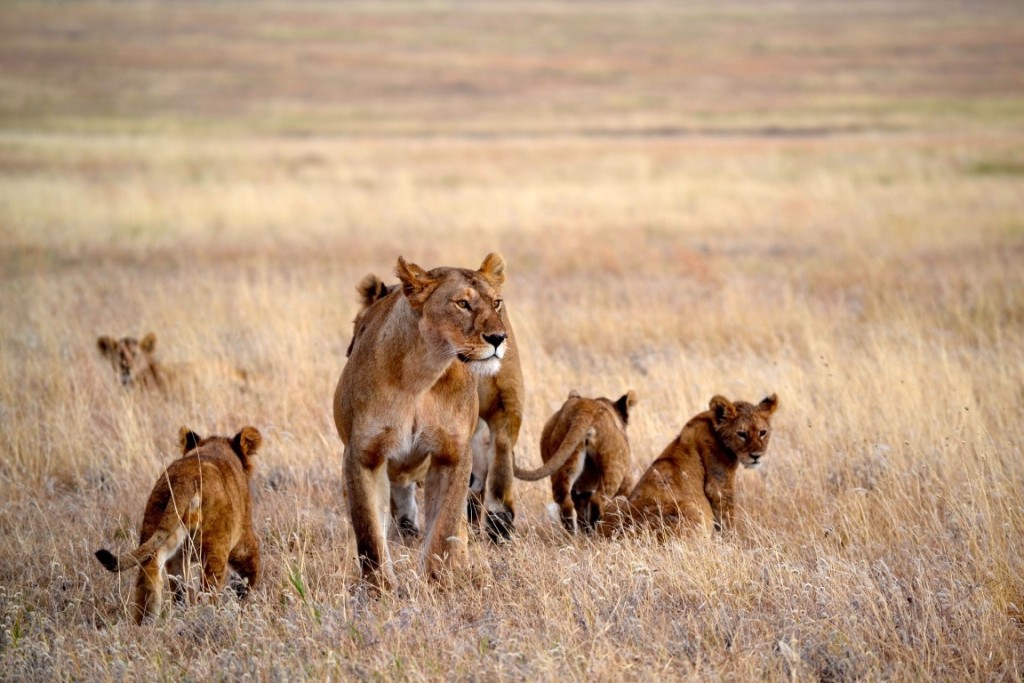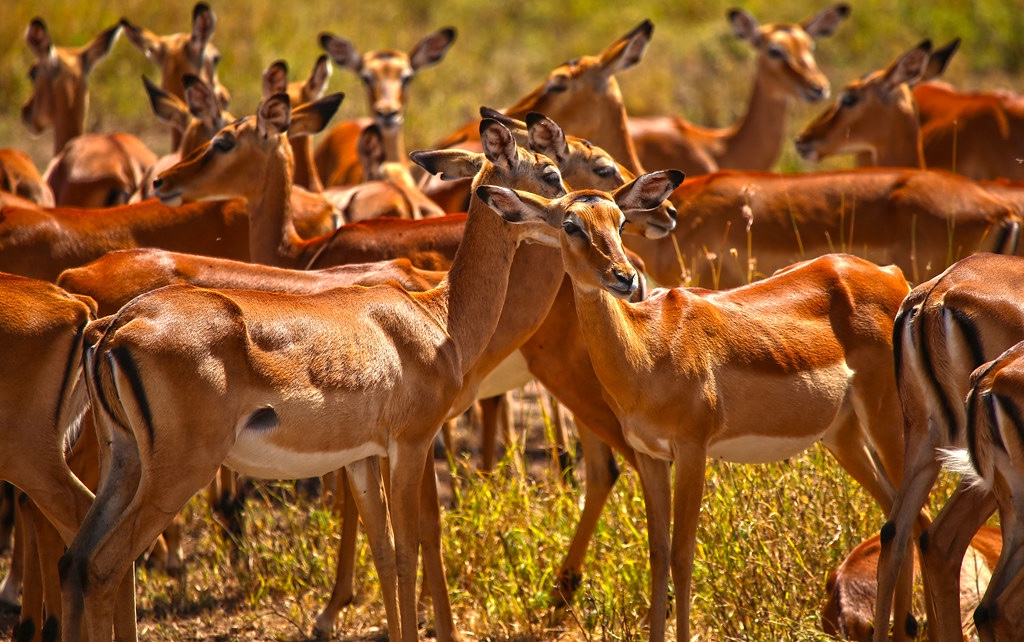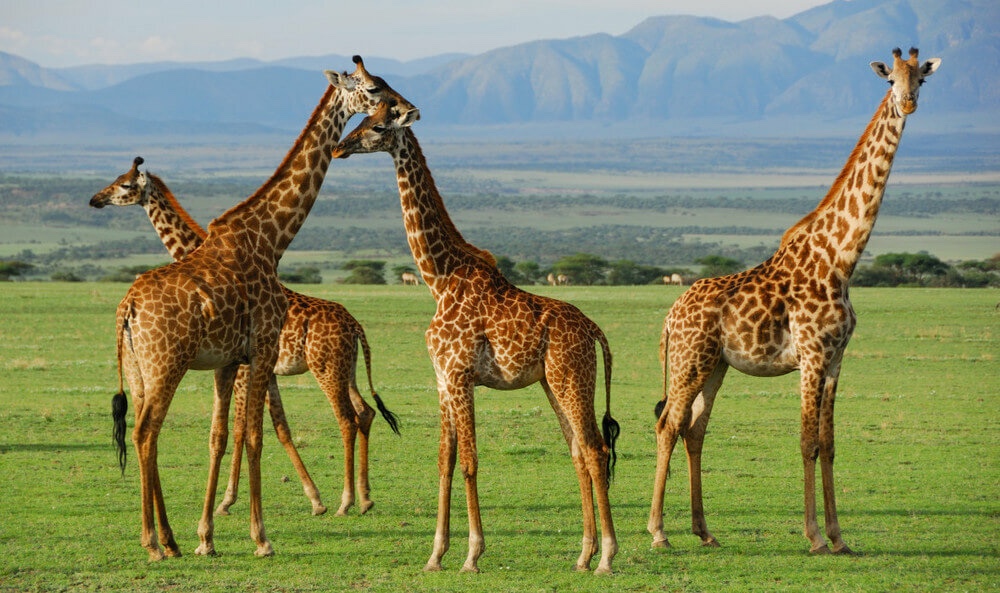February 3, 2023
Nature reserves of the world: Serengeti
We continue to introduce you to the most unusual and interesting nature reserves in the world. Today, fast forward to Africa, to one of the largest nature reserves on the continent - the Serengeti National Park.
It is located in Tanzania, in the Serengeti Natural Area, which also includes the Ngorongoro and Masai Mara nature reserves. By the way, the idea of creating our Notaivory Foundation was also born in this country.

The Notaivory Wildlife Conservation Foundation (or Notivory) was established in 2018 during an expedition to Tanzania. The founders of the Foundation noticed elephant bone products on sale among the local population and decided to create a fund whose goal will be to fight poaching and protect elephants from imminent death. The name of the foundation comes from the English phrase "Not ivory", which means "not ivory". The idea of the name is that for the manufacture of products, instead of ivory, mammoth bone can be used, the reserves of which are large enough, and the extraction of the material does not require damage to the animal world. This was our first step towards the implementation of environmental projects.

And now back to the park :) The word Serengeti comes from the Maasai "siringet" - "endless plains". For a long time this territory was deserted, a few centuries ago the Maasai tribes settled here, and at the end of the XIX century the Europeans came. The first explorer to set foot on this land was the German naturalist Oskar Bauman.
Following the researchers, hunters came to the Serengeti in 1913, but they did not have time to cause much damage to the local wildlife: in 1921, a small partial reserve with an area of only 3.2 square kilometers was formed here, and in 1929 - a full reserve, which became the basis of the modern national park.

Now the area of the Serengeti Park is 14763 sq. km. All the most typical African landscapes are represented on its territory. The northern part of the park is covered with wooded hills, in the south there is a savannah covered with tall juicy grass. It is home to 70 species of large mammals, including the African “big five”: elephant, rhinoceros, buffalo, lion and leopard, and about 500 species of birds. Here you can meet all the animals that are associated with Africa: hippos, giraffes, zebras, antelopes, monkeys, ostriches and crocodiles. The total number of large mammals living in the park reaches 3 million. According to scientists, herbivores living here eat about 400 tons of grass a day!

The park became most famous due to the annual seasonal migrations of animals. Huge herds of wildebeest, zebras and buffaloes (as well as the predators following them) move from south to north from February to June, and back to the south from September to December. This is the best time to visit the park. However, do not forget about the rainy season. From March to May there are frequent downpours, and the trip is likely not to be enjoyable. The climate here is tropical, the temperature ranges from +26 to +30 all year round. Special jeep tours and hot air balloon flights are organized for visitors, allowing them to look at animals without disturbing them. In addition to animals, in the Serengeti you can see hot volcanic springs and salt lakes in the Great Rift Valley. It is home to a large population of flamingos.

On the territory of the park, in addition to natural attractions, there are also archaeological finds. Remains of prehistoric animals and Homo Habilis, the ancestor of ancient man, were found in the Olduvai Gorge area. This place was called the "cradle of humanity" and was closed to the public. Instead, an anthropological museum was opened here for tourists, in which there are many interesting exhibits.
It is located in Tanzania, in the Serengeti Natural Area, which also includes the Ngorongoro and Masai Mara nature reserves. By the way, the idea of creating our Notaivory Foundation was also born in this country.
The Notaivory Wildlife Conservation Foundation (or Notivory) was established in 2018 during an expedition to Tanzania. The founders of the Foundation noticed elephant bone products on sale among the local population and decided to create a fund whose goal will be to fight poaching and protect elephants from imminent death. The name of the foundation comes from the English phrase "Not ivory", which means "not ivory". The idea of the name is that for the manufacture of products, instead of ivory, mammoth bone can be used, the reserves of which are large enough, and the extraction of the material does not require damage to the animal world. This was our first step towards the implementation of environmental projects.
And now back to the park :) The word Serengeti comes from the Maasai "siringet" - "endless plains". For a long time this territory was deserted, a few centuries ago the Maasai tribes settled here, and at the end of the XIX century the Europeans came. The first explorer to set foot on this land was the German naturalist Oskar Bauman.
Following the researchers, hunters came to the Serengeti in 1913, but they did not have time to cause much damage to the local wildlife: in 1921, a small partial reserve with an area of only 3.2 square kilometers was formed here, and in 1929 - a full reserve, which became the basis of the modern national park.
Now the area of the Serengeti Park is 14763 sq. km. All the most typical African landscapes are represented on its territory. The northern part of the park is covered with wooded hills, in the south there is a savannah covered with tall juicy grass. It is home to 70 species of large mammals, including the African “big five”: elephant, rhinoceros, buffalo, lion and leopard, and about 500 species of birds. Here you can meet all the animals that are associated with Africa: hippos, giraffes, zebras, antelopes, monkeys, ostriches and crocodiles. The total number of large mammals living in the park reaches 3 million. According to scientists, herbivores living here eat about 400 tons of grass a day!
The park became most famous due to the annual seasonal migrations of animals. Huge herds of wildebeest, zebras and buffaloes (as well as the predators following them) move from south to north from February to June, and back to the south from September to December. This is the best time to visit the park. However, do not forget about the rainy season. From March to May there are frequent downpours, and the trip is likely not to be enjoyable. The climate here is tropical, the temperature ranges from +26 to +30 all year round. Special jeep tours and hot air balloon flights are organized for visitors, allowing them to look at animals without disturbing them. In addition to animals, in the Serengeti you can see hot volcanic springs and salt lakes in the Great Rift Valley. It is home to a large population of flamingos.
On the territory of the park, in addition to natural attractions, there are also archaeological finds. Remains of prehistoric animals and Homo Habilis, the ancestor of ancient man, were found in the Olduvai Gorge area. This place was called the "cradle of humanity" and was closed to the public. Instead, an anthropological museum was opened here for tourists, in which there are many interesting exhibits.
Read more
July 31, 2024
April 12, 2024
April 5, 2024